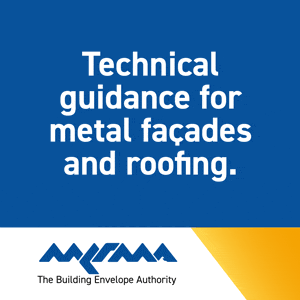top of page


Surrey's blended estates strategy for SEND explained
TG Escapes explores Surrey County Council’s blended estates strategy for the provision of Special Educational Needs and Disabilities in schools and educational establishments. At the recent Education Estates conference, Euan Leslie, Programme Manager for Surrey County Council, along with Chris Leese, Technical Director at TG Escapes Modular, presented “ ModernMethods,InclusiveFutures ”, a detailed look into a highly successful programme for expanding Special Educational Needs


Leading the way in Passive House education
Metal Technology has developed a range of systems to meet the need for Passivhaus-compliant education buildings built with a robust, Fabric First approach. The building sector accounts for 35% of global energy consumption, with the operational stage, particularly heating and cooling, being the largest contributor to carbon emissions. As the UK works to reduce its environmental impact, demand is rising for education buildings designed to the Passivhaus standard. With e


Designing out water waste
With schools under pressure to cut costs and meet net zero targets, water efficiency is a great place to start. Richard Braid, Managing...


Breathing Buildings Showcases Entire School Ventilation Solutions at the Education Estates Exhibition and Conference
Breathing Buildings is set to showcase its complete ventilation solution of natural, hybrid, and mechanical ventilation for schools,...


Create calm, connected, inclusive spaces with modular construction
Richard Harvey, CEO of TG Escapes, has overseen the design and construction of timber-frame buildings since founding the company in 2002....


Research reveals significant solar opportunity for schools
Schools and hospitals should leverage funding to install solar carports, a renewable expert has said, after research revealed a...


School unveils sustainable sports facilities
Edgeborough School has raised the bar for pupil facilities with the unveiling of its brand-new changing block – an eco-conscious,...


Achieving sustainable solar roofing for schools
Creating sustainable environments in our schools is crucial, particularly as schools across the UK are under increasing pressure to...


Accelerating heat decarbonisation in UK schools
Could prefabricated heating solutions offer an answer to decarbonising heat in existing school buildings? Neville Radford, National...


Thermal comfort to boost learning environments for pupils
The Wraptite external air barrier from A. Proctor Group has helped create state-of-the-art learning environments for more than 4,500...


Breathing Buildings offers entire school ventilation solutions
Breathing Buildings, a leading provider of controlled natural and hybrid ventilation systems, offers schools a complete ventilation...


Schools strongly support heat decarbonisation, but barriers hinder progress, according to new Baxi research
The survey results found: More than a third of UK schools continue to grapple with key challenges in achieving heating system...


New report into the private rental sector calls for urgent action to address poor living standards and fuel poverty
The report from the National Retrofit Hub, developed in partnership with Impact on Urban Health, exposes the urgent need to improve...


Retrofitting Energy-Efficient Windows Key to Accelerate Mandatory Upgrading of Millions of Social Homes
With local authorities and housing associations facing acute pressure to upgrade millions of social homes in line with modern net zero...


National Apprenticeship Week: Covid crisis to construction success
When Covid disrupted her A-levels, Lily Frewin faced a crossroads: follow the expected university route or take a leap into something...


InstallerSHOW 2025 - Registration is now open!
Building on the success of last year, InstallerSHOW is returning to the NEC from the 24th to the 26th of June with more than 800 of the...


Building a brighter tomorrow
Saint-Gobain Interior Solutions is helping to lead the charge in tackling the current construction skills shortage. Here, Head of...


Saint-Gobain Interior Solutions tackles the skills gap in first 'Building Better' episode
Saint-Gobain Interior Solutions, through its brands British Gypsum and Isover, is pleased to introduce the first episode of its all-new ...


National Retrofit Hub releases comprehensive report on EPC reform ahead of government consultation
A roadmap to enable scalable, high-quality retrofit across the UK The National Retrofit Hub (NRH) has published "The Future Of Energy...


Pura Façades launches roadshow to improve cladding knowledge.
Pura Facades, part of the Vivalda Group, has launched a nationwide initiative to improve the understanding of cladding among specifiers...
// EDUCATION
// VIDEOS

bottom of page












.png)
